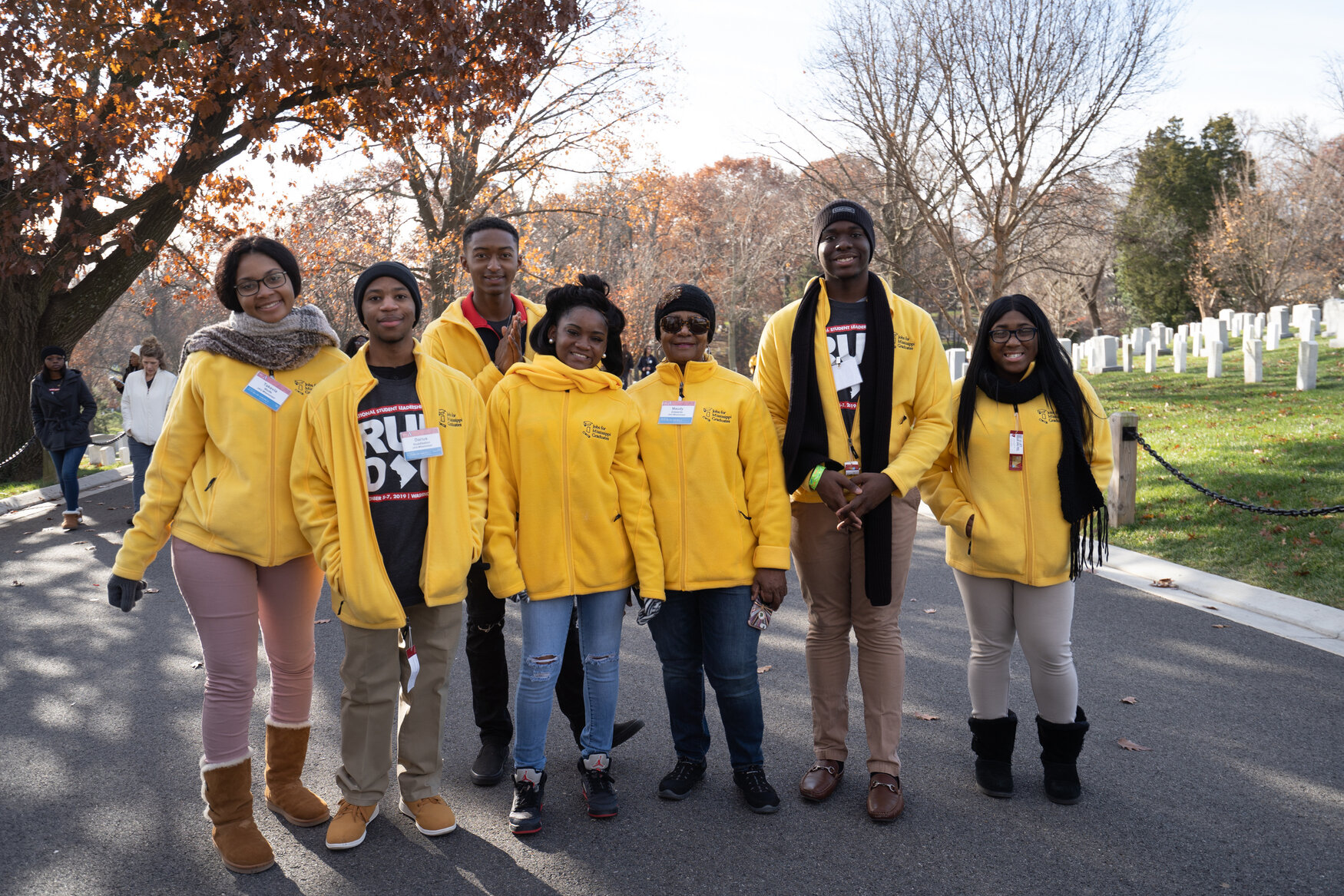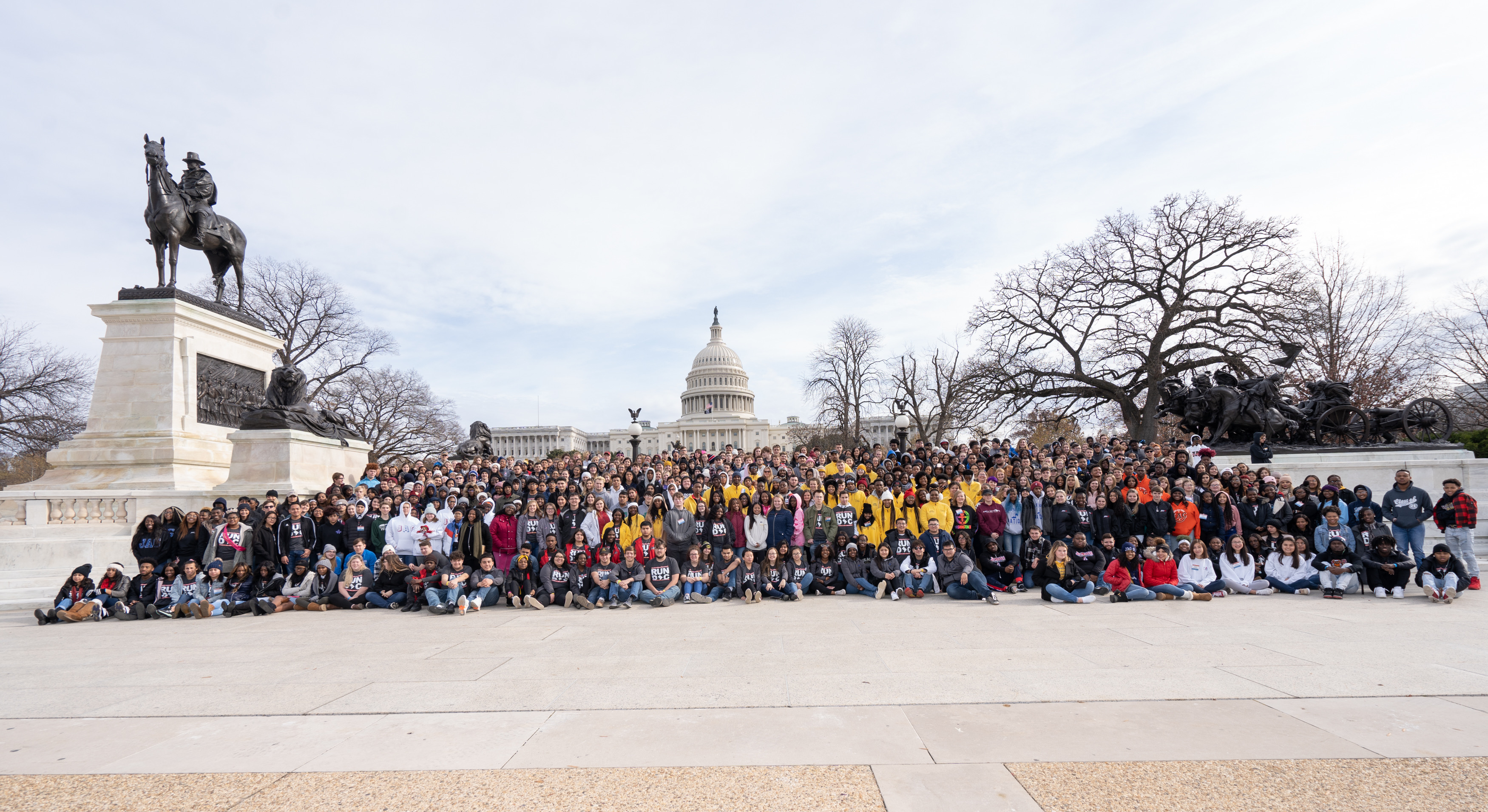
Jobs for America’s Graduates, the program preparing students for higher education and the workforce
For 40 years, the JAG program has provided thousands of students with core skills needed to successfully transition into higher education opportunities and the…
Throughout a student’s educational journey, there are many challenges along the way that may make it difficult to achieve academic success.
The Jobs for America’s Graduates (JAG) program, a state-based national non-profit organization, has dedicated itself to supporting those students and providing the essential skills necessary to overcome those challenges, graduate high school, pursue secondary education opportunities and enter the workforce.
Established in 1980, the JAG program currently serves more than 76,000 students across 1,450 communities in 40 U.S. states.
The JAG program is built on partnerships between schools across the nation, and starts with a conversation.
The head of the program sits down with students to talk with them and determine some of the challenges they face in and out of the classroom.
“We target young people who, without assistance, may not make it through graduation, and are less likely to enter postsecondary education or some meaningful career pathway that would help them get out of poverty,” said Dr. Rene Cantu, executive director of the Jobs for Nevada’s Graduates program.
Some of the factors that may make it less likely for a student to graduate include: excessive absenteeism, disengagement from school, low grades or credit deficiency, a history of disciplinary issues and more.
“Those are indicators of that disengagement and possibility that they’re not going to make it through,” said Dr. Cantu.
“We use that to see if we can reach out and help a young person,” he added.

To identify whether the program is right for an individual student, three questions are posed: Do they need the program? Can they benefit from the program? Do they want to participate in the program?
If the answer to all three is yes, the instructors of the program, known as JAG specialists, are then able to go through the process.
The JAG curriculum consists of a total of 87 competencies, but 37 core employable skill competencies that each student should obtain as they take part in the program and seek to transition into their post-high school endeavors.
Some of the core competencies include preparing a resume, how to write a cover letter, writing a thank you note and how to interview effectively.
“The way I put it simply is we teach them how to get a job, how to keep a job and how to leave a job, so that they don't burn bridges,” said Dr. Cantu.

Beyond mastering the core skills, JAG students also get the opportunity to obtain remediation assistance to meet graduation requirements, develop student leadership skills, and secure part-time employment while still in school.
In addition, the JAG program provides career exploration and preparation tools that help students find career pathways that will help them work their way into the middle class and beyond.
The Pennsylvania affiliate of the JAG program was incorporated in 2019, and the first program in the state was launched at Olney Charter High School.
Each year since, the Jobs for Pennsylvania’s Graduates program has expanded to more schools.
In the previous school year, there were five programs in the state. For the upcoming 2021-22 school year, there will be nine available programs.
They are: Olney Charter High School; ASPIRA Academy; ASPIRA Bilingual Cyber, High School and Middle Charter Schools; John B. Stetson Charter School; Franklin Towne Charter High School; Global Leadership Academy South & Southwest; and Philadelphia Learning Academy - South.
Dr. Ruth Patterson, president & CEO of Jobs for America's Graduates of Pennsylvania, highlighted how the JAG program goes beyond just the concern of whether or not students are passing their classes.
“We’re concerned about their overall high school experience,” she said.
Whether the challenges are in math, science, social studies or any other subject, the JAG specialists are trained to help the student in that subject, as well as provide additional tools and support that can go towards helping their overall educational journey and beyond.
This also includes other challenges, such as a lack of transportation means or clothing for an interview.

Each student is able to experience the JAG program as an individual, while the specialists work alongside them to help determine a career plan that is going to best suit that particular student through a holistic view.
“We try to expose our students to as much as we can,” said Dr. Patterson.
While some students know what they want to do after high school, others don't. Therefore, being able to expose the students to various different potential opportunities and paths is critical to success.
“We meet young people where they are,” added Dr. Cantu, noting that JAG specialists are not only teachers, but also mentors, case managers, and caring adults in their student's lives.
JAG specialists spend a minimum of 120 contact hours per student per year, as a way to build trust between the two parties throughout the school year.
“Our main goal is making sure that we are preparing our students to be college, career and workforce ready when they leave us,” said Dr. Patterson.
There is also a 12-month follow-up program for after the students graduate, that allows them the opportunity to come back and obtain any additional assistance they may need.
The COVID-19 pandemic presented an additional layer of challenges for both the JAG specialists and students.
“It was not an easy year for students or for specialists, for educators or for families,” said Dr. Cantu. “It was a terrible year.”
However, hope was not lost.
“When COVID closed everything down, our specialists leaped into action, identifying challenges that students had,” Dr. Cantu added.
He noted that the top three challenges identified were: stress and mental health-related concerns, the digital and technological divide, and food insecurity.
To help address those challenges, JAG workers made critical contributions. This included referring students to professionals who could help them overcome their stress and mental health challenges, gifting Chromebooks to both students and teachers who needed them to help reduce the technological gap, as well as delivering food and water, and helping out with mortgage, lease and utility payments to prevent evictions or service cutoffs.
“The JAG program is very flexible and very focused on providing individualized and intensive support that I think is unique and special,” said Dr. Cantu.
An additional challenge that both he and Dr. Patterson experienced in their respective cities was the ramifications many students endured as a result of their parent’s losing work.
“During COVID, many lost their jobs and looked to their older children in high school to work [and] to provide childcare for younger siblings, even as they were trying to keep up with school in a remote setting,” said Dr. Cantu.
Dr. Patterson noted that in some instances, students worked multiple jobs, while also tasked with being the teacher to their younger siblings, who also had to navigate online learning.
About 40% of households with income of $40,000 or less lost jobs due to the pandemic, according to an Economic Well-Being of Households report, published by the Federal Reserve.
This largely represents the population JAG serves.
However, despite the various challenges brought on by the pandemic, the JAG program achieved great success during the year — all-time highs in graduation rate at 97%, employment rate at 64% and full-time employment rate at 82%.
This includes students from the Hispanic community, who achieved a graduation rate of 97%, a full-time jobs rate of 83%, and a 42% rate of students who are continuing their education.
Dr. Patterson credited the dedication of the specialists, coordinators, managers and directors of the program to go above and beyond to help their students as what brought that level of success during such a difficult year.
A study conducted by the Center for Labor Markets and Policy at Drexel University found that JAG graduates were 230% more likely to secure full-time employment than the general 18-20-year old population in the country.
For Hispanic graduates, that number is at 180%; and for Black graduates, 290%.
“I’m very proud of our high graduation rates and job placement because the students believe in the program... they believe in us and they trust us,” said Dr. Patterson.
In addition to being a program to help reach academic and later professional success, JAG has also been critical towards addressing the many inequities that exist for students.
A majority of JAG participants identify as students of color, who are often disproportionately impacted by challenges both in the classroom and on the job market.
Dr. Cantu underscored that some challenges he has seen many students of color face are language barriers, as well as many being first-generation Americans, and in some cases having undocumented parents.
Each of those challenges can add an additional layer of difficulty in achieving success in school, and beyond.
Nationally, the youth unemployment rate for Hispanics is 17.4%, and with the JAG program, that number falls to 11.2%. For African-Americans, the youth unemployment rate is at 34.9%, but JAG helped reduce that number to 11.5%, according to a 2020 Bureau of Labor Market Statistics Employment report.
To help address the disproportionate challenges faced by students of color in the program, JAG invests in a number of initiatives with the goal of supporting its students and ensuring that it remains a culturally competent organization.

Initiatives include town halls and webinars that promote open and honest discussions between JAG students and specialists across the country, as well as training and professional development for specialists that aim to develop inclusive and diversity skills.
Furthermore, there is The Love Project: Lifting Our Voices for Equity, a student-led initiative that engages employers and activates the core competencies the students learn throughout the program and puts them into practice in order to create positive change in their communities.
“One of the powerful things about the JAG program is that the student is not a passive participant… but an active catalyst in the program,” said Dr. Patterson. “Not just to help themselves, but to help others.”
For more information about the Jobs for America’s Graduates program, visit its website.










LEAVE A COMMENT: